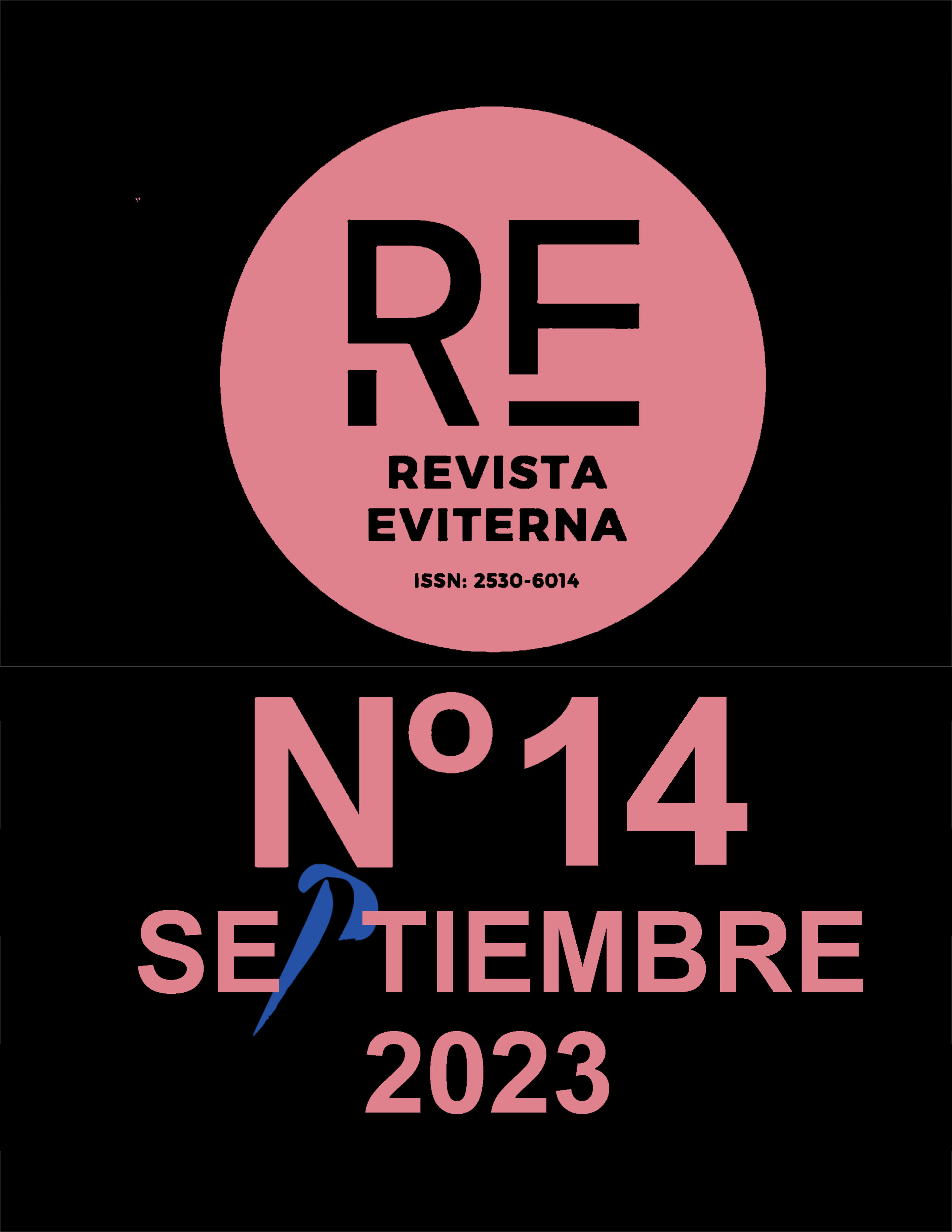Picassian Meta-scenographies
A study from warburgian thought and meta-artistic reflection
DOI:
https://doi.org/10.24310/re.14.2023.16850Keywords:
Performing Arts, Avant-garde art, Visual Arts, Art theory, TheatreAbstract
Pablo Ruiz Picasso's collaboration in the theatrical world has been studied and analyzed by numerous investigations over the years. However, his contribution to the design of the set and costumes for the Ballets russes admits a new approach to Picasso's use of meta-artistic resources; that is, the use of various hybrid aspects between the performing arts and the plastic arts to actively reflect on one's own condition and artistic activity. Based on three case studies, we analyze the presence of a motif resulting from the survival or Nachleben -as formulated by Aby Warburg (1866-1929)- of certain archetypes in contemporary visual culture, such as the urban view in perspective. This scenographic prototype is characteristic of Renaissance scenography, but it also appears as a background in some paintings of the period, doubling the pictorial planes, playing with the effect of depth and the observer's gaze. A practice that this has been called meta-scenography. In Picasso, we find this archetype in the backdrop of Parade (1916-1917), in Pulcinella (1919) and in Cuadro Flamenco (1920), which leads us to rethink Picasso's theatrical production as a kind of meta-scenography, as dialectical and surviving images of a scenographic and meta-artistic tradition.
Downloads
Metrics
Publication Facts
Reviewer profiles N/A
Author statements
Indexed in
-
—
- Academic society
- N/A
- Publisher
- Universidad de Málaga
References
AA. VV. (2009). Arte Moderno. Ideas y conceptos. Instituto de Cultura & Fundación Mapfre Vida.
Aracil, A., Rodríguez, D. (1998). El siglo XX: entre la muerte del arte y el arte moderno. Akal.
Arias de Cossío, A. M. (1990). Algunas reflexiones sobre escenografía picassiana. Conferencia, Salón de Actos de la Fundación, 12 de junio, Málaga 1989. Ayuntamiento de Málaga.
Bozal, V. (1999). Picasso. Electa.
Benjamín, W. (2005). Libro de los pasajes. Akal.
Carmona, E. (2012). Experiencias y narraciones de lo moderno en AA. VV., Colección Cubista Telefónica (pp. 17-55). Fundación Telefónica.
Cooper, D. (1968). Picasso Theatre. Cercle d’Art.
Cowling, E., Mundy, J, (1990). On Classic Ground: Picasso, Leger, De Chirico and the New Classicism 1910-1930. Tate Publishing.
Didi-Huberman, G. [2002] (2013). La imagen superviviente. Historia del arte y tiempos de fantasmas según Aby Warburg. Abada.
Didi-Huberman, G. [2000] (2006). Ante el tiempo. Historia del Arte y anacronismo de las imágenes. Adriana Hidalgo.
Godoy Romero, C. (2020). Picasso: autor, protagonista y objeto dramático. https://www.educacion.gob.es/teseo/mostrarRef.do?ref=1854279
González-Román, C. (2019). Metaescenografías pintadas. Espacio, tiempo y forma, Serie VII: Historia del Arte, 7 (77-102). DOI: https://doi.org/10.5944/etfvii.7.2019.24267
Hénin, E. (2010), Parrhasios and the Stage Curtain: Theatre, Metapainting and the Idea of Representation in the Seventeenth Century. En Art History, 33 (248-261). DOI:10.1111/j.1467-8365.2009.00741.x
Martínez Silvente, M. J. (2014). La perspectiva como superviviente de la tradición clásica: de la arquitectura de las formas a la perspectiva del ombligo. En González-Román, C. (ed.), A través de la mirada (pp. 269-280). Abada Editores.
Méndez Baiges, M. (1994). Bases para un estudio de las relaciones entre vanguardia y tradición: Picasso y De Chirico. En AA. VV. Los clasicismos del arte español (pp. 177-187), Actas del X Congreso del CEHA.
Michaud, P. (2007). Aby Warburg and the Image in Motion. Zone Books.
Museu Picasso (2006), Picasso y el circo https://museupicassobcn.cat/index.php/es/actualidad/exposicion/picasso-y-el-circo
Ocaña, M. T. (1996). Picasso y el teatro: Parade, Pulcinella, Cuadro Flamenco, Mercure. Museu Picasso Barcelona.
Portús, J. (2017). Metapintura. Un viaje a la idea del arte. Museo Nacional del Prado.
Ramírez, J. A. (1983). Construcciones ilusorias. Arquitecturas descritas, arquitecturas pintadas. Alianza Forma.
Ramírez, J. A. (2009). El objeto y el aura. (Des)orden visual del arte moderno. Akal.
Stoichita, V. (2000). La invención del cuadro. Arte, artífices y artificios de los orígenes de la pintura europea. Del Serbal.
Warburg, A. (2010). Atlas Mnemosyne. Akal Arte y Estética.
Warburg, A. (2005). El vestuario de los intermezzi de 1589 (1895). En El nacimiento del paganismo. Aportaciones a la historia cultural del Renacimiento europeo (pp. 291-331). Alianza Editorial.
Downloads
Published
How to Cite
Issue
Section
License
Copyright (c) 2023 Eviterna Journal

This work is licensed under a Creative Commons Attribution-NonCommercial-ShareAlike 4.0 International License.
All the contents published in Revista Eviterna are subject to the Creative Commons Reconocimento-NoComercia-Compartirigual 4.0 license, the full text of which can be found at <http://creativecommons.org/licenses/by-nc-sa/4.0>
They may be copied, used, disseminated, transmitted and publicly exposed, provided that:
The authorship and original source of your publication (Journal, editorial and URL of the work) are cited.
They are not used for commercial purposes.
The existence and specifications of this use license are mentioned.

Copyright is of two kinds: moral rights and patrimonial rights. Moral rights are perpetual, inalienable, inalienable, inalienable, inalienable and imprescriptible prerogatives.
In accordance with copyright legislation, Revista Eviterna recognizes and respects the moral rights of the authors, as well as the ownership of the economic right, which will be transferred to the University of Malaga for dissemination in open access.
The economic rights refer to the benefits obtained by the use or disclosure of the works. Revista Eviterna is published in open access and is exclusively authorized to carry out or authorize by any means the use, distribution, disclosure, reproduction, adaptation, translation or transformation of the work.
It is the responsibility of the authors to obtain the necessary permissions of the images that are subject to copyright.







12.png)



